|
|
|||||||
              |
 |
||||||
A
remarkable encounter - Our
search
began with a remarkable encounter on May 21, 2005. While birdwatching
along the Choctawhatchee river in Florida, my colleagues Geoff Hill,
Brian Rolek, and Tyler Hicks encountered evidence of a woodpecker that
has long
thought to be extinct
in North America. Geoff heard the distinctive double knock of an
Ivory-billed Woodpecker and Brian watched a large black woodpecker
with a white trailing edge on its upper and underwing fly through the
forest. This encounter sparked our detailed search of the
Choctawhatchee River for further evidence of the persistence of
Ivory-billed Woodpeckers.
I joined the search team to coordinate an acoustic survey of the area where Geoff, Brian, and Tyler had observed the bird. The Natural Sciences and Engineering Research Council of Canada (NSERC) provided financial support for the acoustic search through a Special Research Opportunities grant. I recruited the help of Kyle Swiston, my graduate student, and a bright team of undergraduate research technicians working in the Mennill Sound Analysis Laboratory at the University of Windsor. Together we conducted a careful acoustic survey of the forest along the Choctawhatchee River. Our goal was to record the sounds of this forest 24 hours per day and to scan our recordings for acoustic signs of the persistence of Ivory-billed Woodpeckers. |
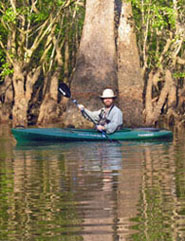 |
||||||
| Listening Stations
- I designed automated, remote Listening Stations to survey the sounds
in the
Choctawhatchee's bottomland forests. Each Listening Station
consisted of an omni-directional microphone attached to a digital
recorder. I protected the microphones from rain using a
PVC-tube "umbrella" and I crafted a sound-transparent shield around
the
microphone head using pet screen material. I mounted this microphone
apparatus on the end
of a shelf bracket, atop a tall wooden pole. These poles were lashed
with bungee cords to small
trees throughout the forest. We used solid state digital recorders for this acoustic survey. To facilitate 24-hour recordings, we recorded sounds as MP3 files which we later converted to AIF files or WAV files for sound analyses. Recharchable lead-acid batteries provided power to each recorder. Kyle deployed fresh batteries and memory cartridges to each Listening Station every day. The recorder and battery were stored in a waterproof "dry bag" at the base of each microphone. Using green, brown, and black spray paint, we camouflaged all components of the Listening Stations to decrease their detectability by humans and birds. Our Listening Station camouflage was so effective that members of our team often walked very near them without noticing the equipment. |
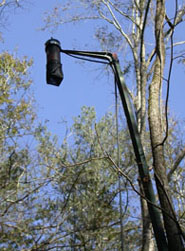 |
||||||
| Sound
Scanning - Recordings were
transferred from the swamp to the Mennill Sound Analysis Laboratory
on campus at the University of Windsor every two weeks. A team of
undergraduate
researchers from
the University of Windsor scanned the recordings for the sounds of
Ivory-billed Woodpeckers. We used a manual scanning process, looking at
sound spectrograms of our recordings minute-by-minute. We
compared the sounds in our Florida recordings to historical recordings
of
Ivory-billed Woodpeckers, to recordings of closely related woodpecker
species, and to
recordings of other sounds that are common within the forest, including
squirrel
calls, bird songs, and gunshots. We collected 11,419 hours of recordings from the forests along the Choctawhatchee River between January and April 2006. In the summer of 2006 we finished scanning these recordings using Syrinx-PC Sound Analysis Software. We also collected audio recordings from the video cameras carried by searchers around the study site. |
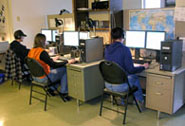 |
||||||
| Evidence -
In the recordings that we have analyzed to date, we have isolated 99
sounds that are consistent with written descriptions of the
Ivory-billed Woodpecker's double
knock and with the double knock displays of other closely related
woodpeckers. We have isolated 210 sounds that are consistent
with historical recordings of the Ivory-billed Woodpecker's kent call. The double knock - The Ivory-billed Woodpecker's double knock consists of two loud raps in direct succession, created by a bird hammering its bill twice against a tree. The Ivory-billed Woodpecker's double knock display was never recorded historically, and no recordings exist for comparison to our Florida recordings. However, James Tanner, who studied Ivory-bills in Louisianna in the 1930s, describes the double knock as "a hard double rap, bam-bam, the second note sounding like an immediate echo of the first". Our recordings of putative double knocks from the bottomland forests along the Choctawhatchee River match this description. You can hear our recordings through the Sounds section of this webpage. The kent call - The ivory-billed woodpecker's call is a nasal sound described by James Tanner as "sounding between the note of a clarinet or saxophone mouthpiece and a tinny trumpet." The kent call was recorded by Arthur Allen and Peter Kellogg in 1935. However, comparisons between our recordings and the Allen/Kellogg recordings must be treated cautiously because they were recorded in different contexts; their calls were recorded at an active nest, whereas ours were recorded at a variety of locations throughout the forest. Furthermore, the birds recorded by Allen and Kellogg appeared to be disturbed by the recordists near the nest. Nevertheless, our recordings of putative kent calls from the bottomland forests along the Choctawhatchee River share similar fine structure to Allen and Kellogg's historical recordings. You can hear our recordings through the Sounds section of this webpage. Acoustic evidence for two birds - Two of our recordings provide evidence for two individuals. Our recording from 12/25/05 (recorded with a video camera) and from 1/20/06 (recorded with an automated Listening Station) feature putative double knocks exchanged between individuals at different distances from the microphone. |
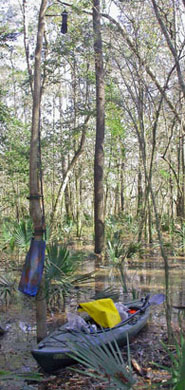 |
||||||
| Further evidence
- The acoustic
evidence outlined on this webpage constitutes one of many corroborative
lines of
evidence we collected for the persistence of Ivory-billed Woodpeckers
in Florida. Our search team collected other lines of evidence (all
of which are
presented in detail in our publication in the journal Avian Conservation and Ecology -
Ecologie et Conservation des Oiseaux ACE-ECO): 1. Visual encounters - Four members of our search team observed Ivory-billed Woodpeckers on fourteen different occasions. 2. Acoustic encouters - A total of seven people, inlcuding members of our search team and visitors to our study site, heard double knocks or kent calls on 41 different occasions. 3. Large cavities - We collected careful measurements of nest cavities in the bottomland forests. The size of many cavities in trees along the Choctawhatchee far exceed the maximum published dimensions of Pileated Woodpeckers, and are likely those of Ivory-billed Woodpeckers. See pictures of the cavities at Geoff Hill's Ivory-billed Woodpecker Website. 4. Bark adhesion - We found signs of woodpecker feeding on trees with very tightly adhering bark along the Choctawhatchee River. We compared the adhesion of bark on all woodpecker feeding trees at our site to three comparison forests where Ivory-billed Woodpeckers are absent. We discovered feeding signs on trees with significantly tighter adhering bark along the Choctawhatchee. This is consistent with our understanding that Ivory-billed Woodpeckers feed on more freshly dead trees than other woodpeckers. See pictures of feeding sign at Geoff Hill's Ivory-billed Woodpecker Website. You can read more about these lines of evidence for the persistence of Ivory-billed Woodpeckers in Florida through our paper in ACE-ECO and through Geoff Hill's Ivory-billed Woodpecker Wepbage at Auburn University. |
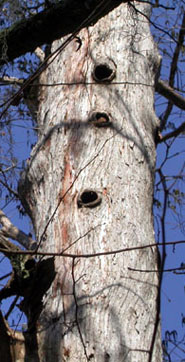 |
||||||
 |
 |
 |
 |
 |
 |
 |
 |
| Back to the top | |||||||
 |
|||||||
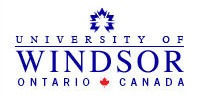 |
 |
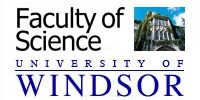 |
 |
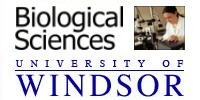 |
|||
 |
 |
 |
 |
 |
 |
 |
 |
|
All information on this website is
copyright Daniel Mennill.
No information on this page may used without explicit permission (dmennillATuwindsorDOTca). |
|||||||